When winter comes, keeping your heating system operational is more important than ever. Unfortunately, even if you have done most routine maintenance, you may not have prepared for temperatures reaching into the double digits below zero.
Given all of the erratic and wide scale changes in temperature across this planet, it is entirely possible that areas not usually accustomed to freezing temperatures will experience them before temperatures climb out of control.
Under these circumstances, you should take some extra care when winterizing your heating systems so that you can reduce the risk of them failing when you need them most.
1. Know How to Reset or Make the System Recycle
No matter where or why a fault occurs in the heating system, it may cause the entire unit to shut down even though you may have solved the problem. In some cases you may need to shut power to the unit or take some other steps to get the heating system’s computer to reboot and recognize that the problem has been solved.
Make sure that you know how to reset the system so that you do not waste all of your efforts on solving a problem only to have the system refuse to start up again.
2. Use Good Quality Surge Protectors on All Devices
Overall, there is no way for consumers to protect electric power lines from major freeze ups. If you have your own power generating system, you can try buying cables beneath the frost line, however that may not help with connections coming into a building. Regardless of where you get electricity from, you should make it a point to have all electrical equipment plugged into a good quality surge protector.
For computers and other sensitive devices, you should choose a surge system that also includes a UPS or “Uninterrupted Power Supply”. Essentially, these devices can smooth out brown outs and surges, and also use a battery to provide steady power to your devices.
Perhaps even better, if you do wind up with a major power failure, the battery pack can give you anywhere from 2 – 4 additional hours of run time.
When choosing a UPS system, always pay attention to the warranty and coverage limits in case the unit fails. Over the years, many people have bought UPS systems that were only supposed to last 2 – 3 years, and then did not understand why their devices were ruined 5 years later, when an actual brown out or surge occurred.
It is important to realize that UPS systems utilize rechargeable batteries. Since they are under constant wear, they must be replaced on a regular basis.
If devices on the UPS system are ruined during the warranty period, the additional insurance should cover replacing those devices. Just make sure that all devices hooked into the computer are also plugged into the UPS.
For example, a surge can come through a printer, and then transfer through the data cable and ruin a computer and any other device wired up to it. In these situations, the UPS system manufacturer will not reimburse you for damages because the surge did not come through their product.
3. Make Sure Air Inlets Remain Clear
Most heating systems require air circulation courtesy of vents that lead from the system to the outdoors. While these vents may not be easily visible to you, snow can melt on them and form ice.
Once the vent clogs up, the heating system will generate a fault and stop working. Make it a point to know where these vents are. If your system stops working and the temperatures are below freezing, check these vents out first to see if they are obstructed. In many cases, clearing this obstruction will clear the fault problem and make it possible to restart your heating system.
4. Use Insulated Stove Pipe and Keep Exhaust Vents Clear
Just about any heating system will release water vapor as part of the exhaust. Once this vapor hits cold air, it will turn to ice. This ice, in turn, will collect on the inside of a chimney or exhaust vent and eventually block all flow of exhaust out of the system. As with a clogged air inlet, this problem will also cause a fault that causes the system to shut down. If this happens, you will have to clear the exhaust pipe and then restart the system.
Because this is such a common problem, you can, and should look for ways to avoid it. There are insulated stove pipes that will not freeze up, as well as other items you can purchase to keep exhaust vents clear. Even though it may cost a bit to replace external stove pipe or refit a chimney, it will be well worth it in the long run.
5. Install Filters on the Fuel Line and Keep Them Clean
If you have ever worked on a car, then you also know that gasoline is not entirely free of debris and other particles that would cause damage to the valves and other delicate parts of the engine. Various particles found in fuel oil, and water vapor in propane gas can also foul up the system or cause it to stop working.
Surprisingly enough, more water vapor will be released during freezing temperatures, which means that there is a greater chance of fouling the system. As such, you are best served by installing fuel filters. At the very least, if the system does fail, you will have an easier time cleaning the filter than you will trying to clean the burner and other elements of the heating system.
It should also be noted that fuel filters are more prone to clog up when they are in a freezing cold environment. You can avoid this problem by putting the fuel in a sheltered area of the fuel line and still get all the benefits from it. Just remember that the fuel filter can still be a main culprit for system failure, and it will be one of the first things you will need to check.
6. Keep Your Fuel Storage Tank in a Sheltered Area
Even though fuel storage tanks are designed to last for decades, that does not mean the contents inside of them can withstand freezing temperatures. In fact, even diesel blends designed for ultra-cold temperatures will thicken in a tank that is exposed to freezing cold temperatures. Also, once propane liquefies, it cannot be used until returns to the gas phase.
All of these problems can be avoided by keeping your fuel tanks in some type of well-ventilated shed or other type of shelter. If the temperatures still get too cold, there are special, non-explosive heating bulbs that you can use to keep the fuel shed warm.
When you have a whole tank of fuel that cannot be used because of the cold weather, it can be very tempting to use blow torches, candles, or other flame based heating devices to thaw the fuel out. On the other hand, fuels also heat up very quickly, and flames can still cause the fuel to ignite very quickly. Always be on the safe side and use only devices and methods that are safe for the fuel under consideration. There are no safe shortcuts to bring fuel up to an appropriate temperature.
7. Make Sure Fuel Tanks are Full Before a Freeze Occurs
No matter how hard fuel manufacturers try, water is always going to get into the final product. In addition, as time goes by, water vapor and condensation will also build up in tanks and fuel lines. When temperatures drop below zero, even more water vapor will be released by the fuel.
Under these circumstances, the fuel going into the heating system will either have so much water it clogs the filter, or it will cause the system to misfire. In both cases, the system will shut down until the fouled parts are cleaned up and restored.
While this may seem like a simplistic answer, one way to avoid condensation problems is to keep the fuel tank as full as possible before freezing temperatures occur. In this case, you can try topping off the day before, or even within hours of a major cold snap.
8. Keep a Smaller Container of Fuel Indoors for Emergency Needs
Depending on where you live, fuel delivery companies may not be willing to supply more fuel unless you order a minimum of 100 gallons.
In these situations, they are not likely to be willing to deliver anything less just so that you do not have system failure because of condensation building up in the fuel tank. So you might be best served by removing some fuel from the external storage tank and bringing it indoors. From there, you can feed the fuel system directly from the container.
Here are some tips for doing this as safely as possible:
- Make sure that the container is rated for safely storing the fuel in question.
- Do not allow the fuel to be stored in areas where sparks can reach it.
- Keep the fuel container fully covered so that pets and children cannot get into it.
- Make sure the container is stored in a location where it will not tip over.
- The fuel container should be kept in an area where it is warm enough for the fuel to flow properly, but not so warm that it can be ignited.
- The area should be well ventilated so that hazardous fumes do not build up.
- If you must cut into the fuel line, make sure that it is sealed properly. It is also important to use pipe, valves, and other items that are safe to use with the fuel in question. This includes making sure that metal used in the line will not be corroded by the fuel.
9. Use Larger Diameter Pipes or Tubing for Outdoor or Unprotected Pipes
Chances are, you already realize that liquids will flow faster and more easily through larger pipes than small ones. As such, you might find it of some use to install larger pipes from the fuel tank and through any areas that tend to be harder to insulate.
Even if the fuel is thicker and moves slower than usual, the larger pipes can help offset that problem. This is especially important to consider if you cannot afford large quantities of heating tape or other forms of insulation.
At the very least, you can use these items on fittings that cannot be changed for larger sizes, and then rely on the larger pipes to keep the fuel moving. Once the fuel reaches warmer locations, you can always scale the pipe size back down so that it matches the fittings on the heating system. Today, there are all kinds of adjustment couplers that you can use to achieve this goal.
Video first seen on This Old House
10. Use Snow and other Materials as an Insulator
No matter how cold temperatures get, insulating pipes, regulators, filters, and tanks remains one of the best things you can do. In most cases, even if temperatures reach 20 degrees or more below zero, the cold will not be able to reach the lines. As long as they were warm enough before the cold snap hit, they will remain warm enough for some time. When choosing insulation for fuel tanks and lines:
- Make sure that the insulation is non-flammable.
- Choose insulation that is specified as safe for the fuel type stored or being transported through the lines.
- Try to choose insulation that is as flexible as possible so that it is easier to cover bends in the fuel line or other complex areas.
- Make sure that you observe all ventilation instructions that come with the insulation. Failure to take these precautions can cause an explosion that will do far worse than the cold temperatures.
When temperatures reach the double digits below zero, snow can actually be warmer than the surrounding air. As such, it can also act as an insulator if you have nothing else available. In this case, if you have a propane tank, or even a tank of diesel that is too cold to use, the snow may help raise the temperature in the tank without posing a fire risk. If you decide to use snow as an insulator remember that:
- Any warmth will cause the snow to melt, and then form ice as the temperatures drop again. As such, you may wind up with a fuel tank encased in ice if you leave the snow in place for too long.
- As snow melts into water, and then refreezes back into ice, it will expand. If you have the snow tightly packed around a tank or fuel lines, it is possible for the external ice to damage or even crush the lines. Always monitor the snow carefully to make sure that it is not turning to ice and leading into an even bigger problem.
11. Use Heat Tapes and Bulbs Appropriate for the Fuel Being Used
If you have ever owned your own well in a cold climate, then you already know that electric heating tapes are indispensable during the winter months. Today, you can buy specially made electric tapes that are safe for propane and other fuel lines. As long as you have electricity, you should be able to run these tapes without any problems.
When you are optimally prepared for freezing temperatures, your fuel tank should already be in some kind of shelter. Depending on the fuel type, you may also need special heating bulbs that will keep the enclosure warm without causing an explosion. Even though these bulbs may be a bit more expensive, they are well worth it in the long run.
Overall, you will find that heat tapes can last for decades once installed. On the other hand, the last thing you will want is to have heat tapes fail during a cold snap and not have any spares on hand. You should have double the number of tapes needed on hand just in case you need them.
While it may be a bit time consuming to retape fuel lines, at least you won’t have to worry about trying to acquire new heat tapes during the crisis period. Needless to say, you should also store away plenty of heating bulbs so that you have them onhand. Just store these items in a dry, cool place so that they do not become corroded or damaged by moisture or other environmental factors.
It is important to realize that during a cold spell, you may also lose power. No matter whether ice forms on power lines, trees fall on them, or other problems occur, heat tapes and bulbs will not work without electricity.
Under these circumstances, it is very important to know how much power the heat tapes require. You should always keep at least some kind of rechargeable battery onhand and in a safe location so that you can generate electricity to run the heat tapes and bulbs.
12. Using Hair Dryers and Hot Water to Unfreeze Lines
As with water pipes, it may be a bit difficult to find out just how large a stopped up area of fuel line actually is. It can truly be frustrating to discover that you can’t use propane torches, candles, kerosene space heaters, or other flame based devices to warm the lines up.
Depending on the fuel type, you may also have to avoid using hair dryers. Typically, hot water will be the safest option you will have for warming up frozen fuel lines, regulators, and fuel filters. If you cannot get the fuel lines to thaw out, then you will more than likely need to do the following:
- Burn wood, paper logs, or other materials in a store that is safe for this purpose. If your home does not have a backup heating system, then it may be a good idea to install one.
- Use multi-fuel heaters. If you do some research, you may be able to find heaters that will take diesel as well as kerosene. Just be aware that different fuels produce different amounts of heat. You should store enough fuel away to last several weeks.
- Close off rooms and use candle heaters to heat up small areas of space.
- Don’t forget that sunlight on even the coldest day can bring heat in through the windows. Open up curtains to let the sunlight in, and then close them back up at dusk to keep as much heat as possible in the room.
- Use extra layers of thin clothing to help retain body heat
- Make sure that your windows, doors, walls, ceilings, and floors are properly insulated. There is truly nothing worse than “efficient windows” that let heat out when a simple sheet of plastic over the window can solve the problem. At the very least, if you don’t want to put plastics over your windows, keep some material on hand for a time of need. No doubt, you will be amazed when you see just how much cold air was getting through those energy efficient windows and robbing your home of vital heat during the winter months.
Most people that have lived in cold climates already know that preparing for the winter months goes well beyond storing up some extra fuel and having the burner serviced. In many cases, being prepared for a cold snap can involve a number of maintenance items that must be carried on during episodes of freezing temperatures.
No matter whether you need to drain fuel filters, clear exhaust and intake vents, or ensure heat tapes remain functional, they are all very important elements of keeping the heating system functional during freezing temperatures.
That being said, no matter how much you prepare for freezing cold temperatures and blizzards, there are times when your best efforts will fail. Do not hesitate to keep wood, coal, kerosene, and candles on hand so that you can generate as much heat as possible.
This article has been send by Carmela Tyrell for Survivopedia.


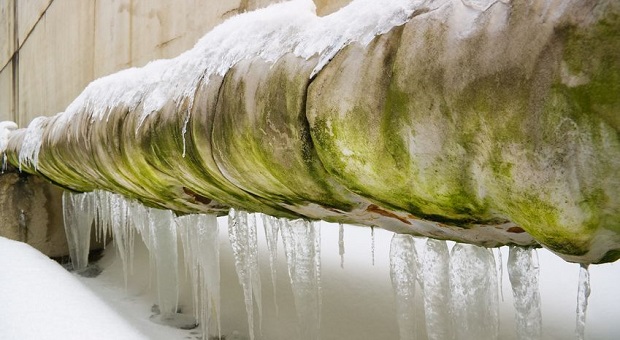

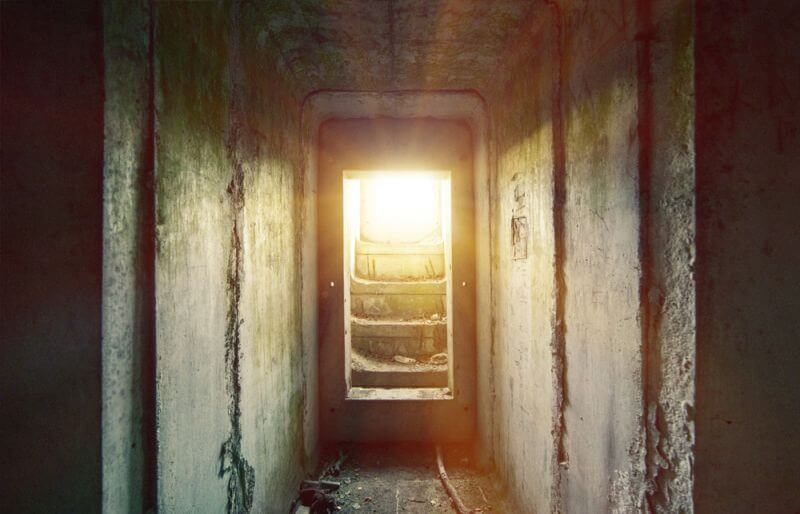
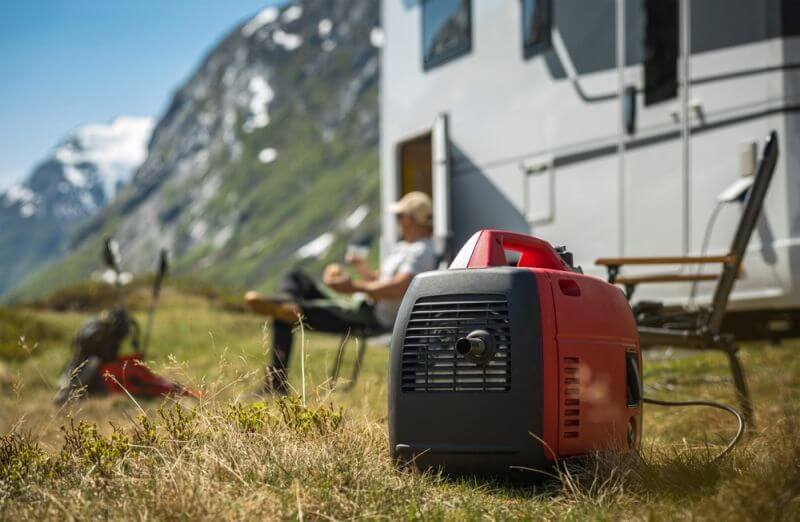
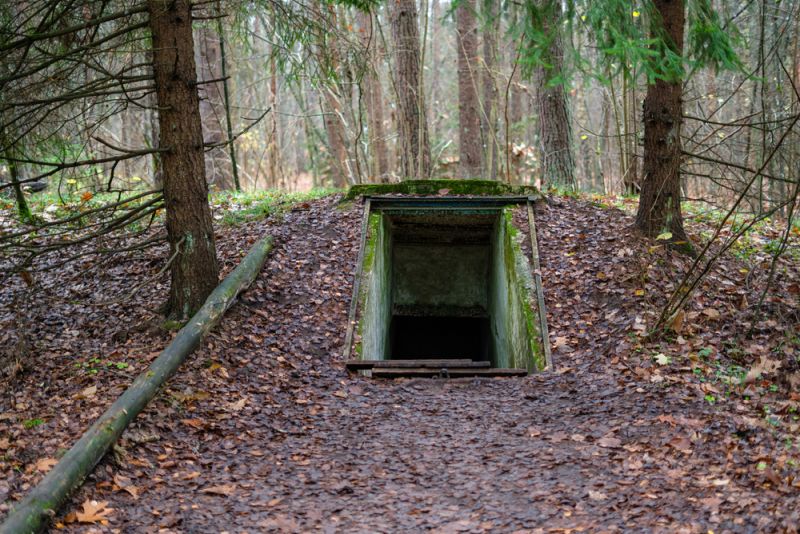
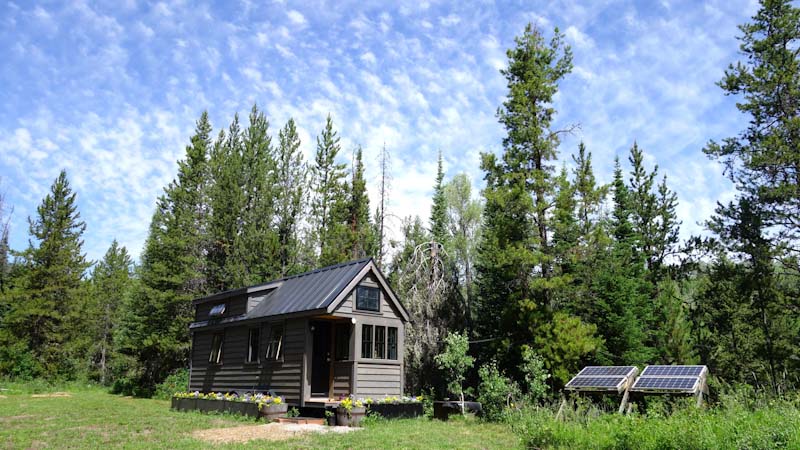

Pingback:12 Ways To Protect Your Heat Sources From Freezing | Prepper's Survival Homestead | February 11, 2016
|
dotsie | February 11, 2016
|
“Overall, there is no way for consumers to protect electric power lines from major freeze ups.”
I don’t understand how an electric line can freeze up. What are the symptoms?
milingallen | February 11, 2016
|
The electric power “line” will “freeze up” when coated with ice, become heavy and break, thus cutting off the power to whoever is beyond the break. It is the word “line” in the term “electric power line” which is the key word because it is the “line” the power flows through which can freeze and break. Electricity does not freeze, but physical lines that carry the power can – and do.
Pingback:12 Ways To Protect Your Heat Sources From Freezing | NewZSentinel | February 11, 2016
|
Dotsie | February 11, 2016
|
“eventually block all flow of exhaust out of the system. As with a clogged air inlet, this problem will also cause a fault that causes the system to shut down. If this happens, you will have to clear the exhaust pipe and then restart the system.
Because this is such a common problem, you can, and should look for ways to avoid it. There are insulated stove pipes that will not freeze up, as well as other items you can purchase to keep exhaust vents clear.”
I have never Heard of this happening, though my experiences are all with older systems. Wouldn’t this cause a dangerous CO problem?
Pingback:12 Ways To Protect Your Heat Sources From Freezing | Bsn Global News | February 11, 2016
|
Pingback:Survival News 02/11/15 | Survival Pulse | Daily Survival & Prepper News | February 12, 2016
|
Pingback:12 Ways To Protect Your Heat Sources From Freezing | TheSurvivalPlaceBlog | February 12, 2016
|
Pingback:11 Tips On How To Survive A Polar Vortex | Survivopedia | December 20, 2016
|